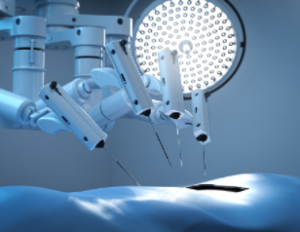Robotic surgery has many advantages to surgeons and patients alike. No more pain. Less risk of blood loss and infection. Your surgeon makes small incisions instead of large ones, reducing the risk of blood loss or infection.
 AHKC Robotic Surgery Adelaide has been around for many years, but it has only become more popular in the past ten or so years. Many doctors feel safer because it doesn’t involve cutting as much tissue as traditional surgeries. However, there are still some risks involved, and some people may still be put off. The main benefit of robotic surgery is providing a minimally invasive surgical method that offers long term results.
AHKC Robotic Surgery Adelaide has been around for many years, but it has only become more popular in the past ten or so years. Many doctors feel safer because it doesn’t involve cutting as much tissue as traditional surgeries. However, there are still some risks involved, and some people may still be put off. The main benefit of robotic surgery is providing a minimally invasive surgical method that offers long term results.
There are two ways to perform this type of surgery – either in an operating room with a full-scale robotic system or through a miniaturized system. In an operating room, a robotic system will do the surgeon’s work, and it will use a video and display system and instruments that are miniature. On the other hand, through a miniaturized system, the surgeon can use almost the same size as a sheet of paper. There is also less risk involved because the instruments are more minor.
One of the most important things to remember is no distinction between robotic surgery and open surgery. Both types of surgeries have their pros and cons, but they are the same type of surgery. Open surgery involves the use of a scalpel, and incisions are made within the body. With robotic surgery, the surgeon uses instruments that are much smaller than those used in open surgery.
Another difference between robotic surgery and open surgery is that to perform the minimally invasive technique, and smaller incisions are made. In the past, surgeons used a scalpel and performed procedures in large surgical units to see all body areas at once. However, since the advent of smaller and more precise tools, surgeons can perform minimally invasive procedures in much smaller units. It means that there is greater precision in the procedure, and minimal scarring is left behind.
Another benefit to robotic surgery is the fact that the recovery time is much shorter. For open surgery, patients may be on an operating table for hours upon hours before being released to the hospital for recovery. However, if a robotic surgeon does the work, the patient is out of bed and on the operating table within two hours. In addition, because the operation was done in a lab, there is less pain involved. As a result, patients can return to normal activities much sooner because they do not have to deal with the immense pain of surgery.
It can be even more beneficial for patients who cannot go through traditional surgery in some cases. One such example of this is a hernia. If the incision is made in a smaller area, there is less blood loss, making it easier for the patient to heal quickly after the operation. In addition, since traditional surgery places a lot of strain on veins and arteries, blood loss is one of the most severe complications during the procedure. By performing robotic surgery, blood loss is significantly reduced, and the patient can go home the same day as the procedure was performed.